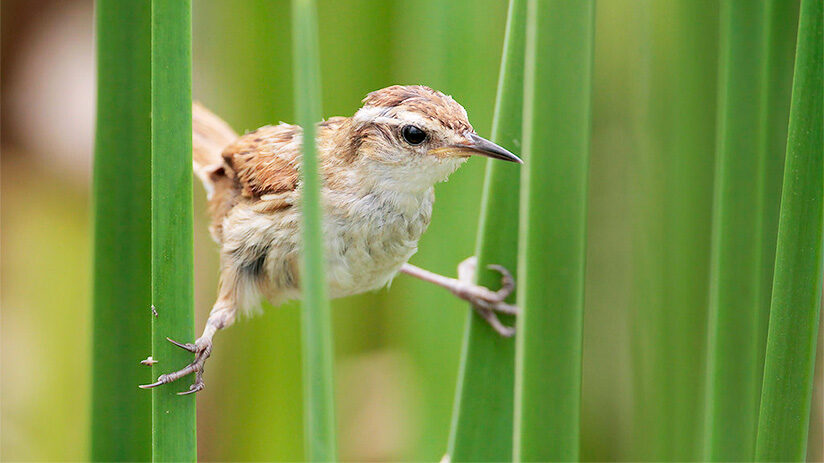With a territory as extensive as the Andean Country and thanks to its great biological and geographical diversity, Peru is the best country to do bird watching. It is home to 20% of all bird species in the world. Which makes it a paradise to experience bird watching. That is why together with the travel experts of Machu Travel Peru we have prepared a small article about the best places to enjoy bird watching in Peru. In recent years, new species have been found that have not yet been given a scientific name. And, believe it or not, more new species are being discovered as this article is being written. Unbelievable!
A complete guide on how to experience bird watching in Peru
- Bird watching in Peru
- Bird watching for beginners
- Where to enjoy bird watching in Peru?
- New species in Peru
Bird watching in Peru
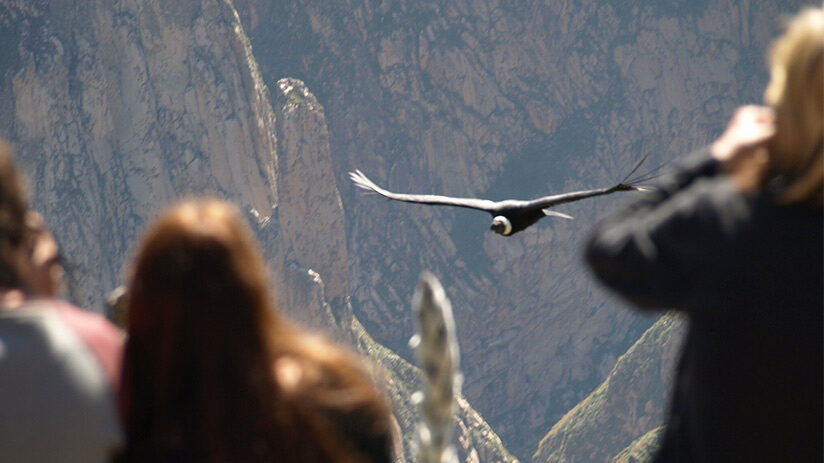
Bird watching in Peru has more than 1800 species to be photographed, 110 are endemic, which means they don’t exist anywhere else in the world but in Peru. Manu, Tambopata in the south. Huascaran at the center. Tumbes, Cutervo at north among others are places where you can see them.
Besides other destinations such as Ecuador and Costa Rica, Peru and specifically Manu is the world’s capital of bird watching without a doubt. It has large expanses of forests and intact wilderness areas. For example, by way of illustration, two-thirds of the Manu Biosphere Reserve remains unexplored. It’s believed that many uncontacted indigenous tribes live in this part of Manu, besides other undiscovered bird species. Therefore, bird watching in Peru can be a wonderful excuse to travel to its wild and remote places.
Bird watching for beginners
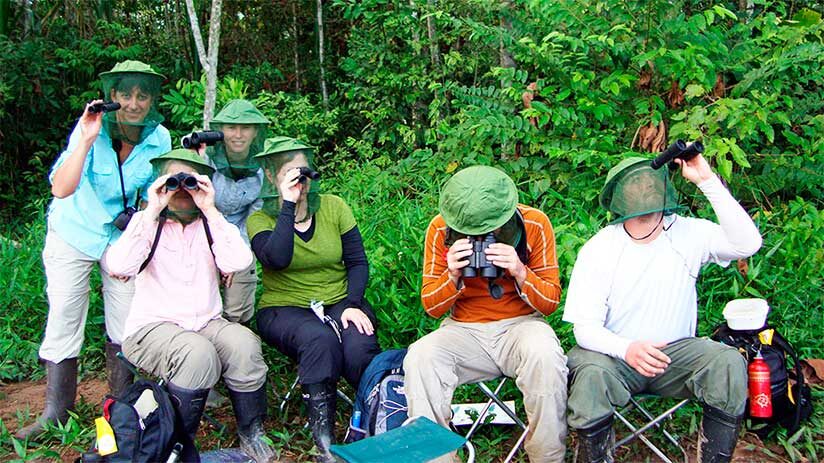
If you are new to bird watching, Peru could potentially be a perfect destination. In a trip of a few days, you are guaranteed to see hundreds of species of birds, many of them difficult to identify. But, don’t worry, most tours have a specialist field guide to help you. However, keep in mind that a trip covering all viewing Peruvian sites can be difficult to accomplish unless you have plenty of time. Therefore, this article will give you an idea of the places available and what possible species you will come across.
- Start taking walks: If you are a sedentary person, you will not chance to see some birds, as much as these are around your house. Start to take long walks around your house, close parks, and put attention to the singing of birds, to tune up the ear.
- Buy good binoculars: If you think that bird watching is a cheap activity, you are in a wrong. It is true that this activity is not as expensive as other nature excursions, however, you will have to invest in good binoculars to capture the beauty, detail by detail, of your favorite bird.
- Get a specialist tour guide: As much as you’ve read hundreds of bird watching books, the company of a specialist tour guide doesn’t have a price. Generally, the Peruvian specialist are tour guides with technical studies in biology or professional biologists In this form, you will have a beautiful bird picture in your head with the best explanation by a local expert (who knows very well his zone)
- Start walking in the mornings: Basically, this advice is for someone who wants to have the greatest possible chance to see different types of birds. In general, after sleep, these fly, haunt and go out in the mornings to search for food and grains. On the other hand, the rest time for birds is noon, and In the afternoon, they are prepared to sleep. Therefore, the famous phrase: “The early bird catches the worms” applies perfectly in this situation.
- Patience is the greatest virtue: If you are not patient, many birds can escape from your view. These are timid and elusive, for this reason, the key to all good bird watchers is patience, staying quiet for some minutes, and getting their goal.
Where to enjoy bird watching in Peru?
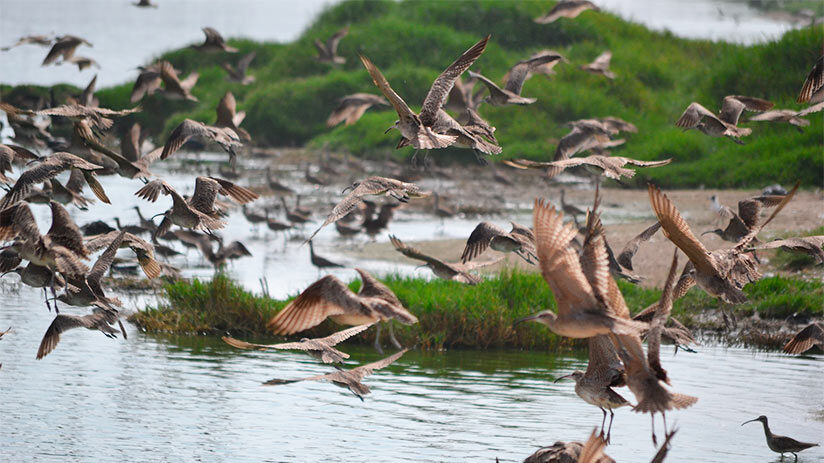
To give you an idea, Peru has more species of birds than are found in all of North America and Europe combined. In addition, many of these are endemic, that is, they cannot be found anywhere else in the world! Just visualize waking up in the morning, inside nature reserves, to the deafening noise of thousands of parrots and macaws. This is one of the cacophonous experiences that you can enjoy while you are in Peru. Or imagine being able to appreciate a beautiful Andean cock-of-the-rocks against the backdrop of the Inca fortress of Machu Picchu. Or picture yourself having an encounter with an Andean Condor in the wonderful Colca Canyon.
Therefore, Peru is a whole country to explore, and over the last 30 years, more than 42 new species of birds have been described. And this is only in some of the few protected regions that Peru has.
North of Peru
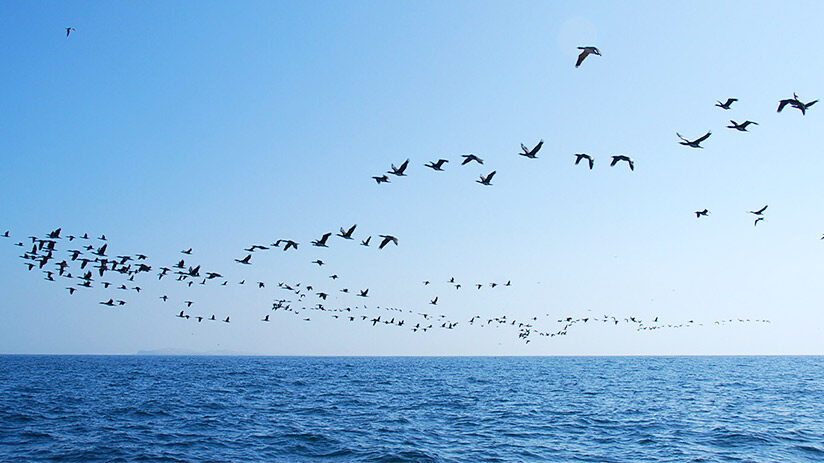
It can be said that the most amazing north Peruvian birds are located among the arid valleys of Marañon, Utcubamba, and the cloud forests of the eastern Andean slope. Even, a quarter of 110 endemic birds live between northwestern Peru and southwestern Ecuador.
Some of the most beautiful birds here are the Marvelous Spatuletail, Golden-collared Honeycreeper, Orange- and Gold-eared Tanagers, Shrike-like Laniisoma, Yungas, and Blue-rumped Manakers, Amazon Umbrellabird, and Guacharo. In addition to the black-jawed toucan, the crested and golden-headed quetzals, the Tumbes tyrant, the gray-breasted mountain toucan, the white-tailed jay and the yellow-banded tanager, the royal solar angel, the white-winged guan, the Purple-throated fruit crow, the yellow-faced parrot, the rufous flycatcher, the whiskered owl, the gray-bellied kite, and three species of Inca finches.
Best zones to find them
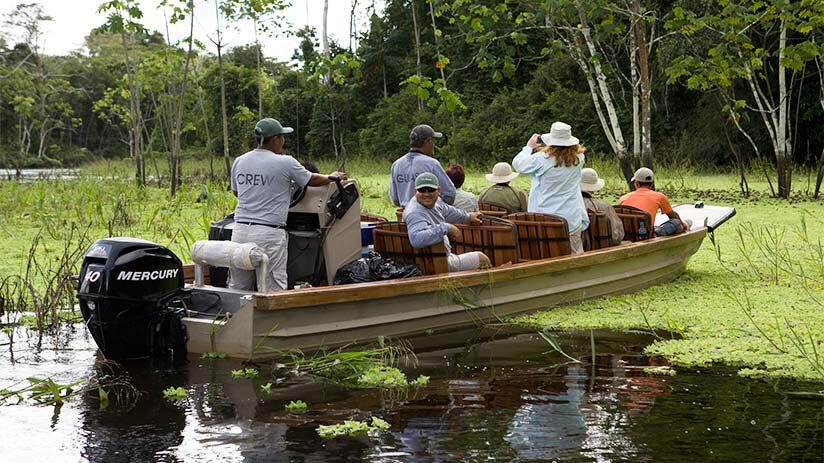
Marvelous Hummingbird Interpretation Center, Río Chido/San Lorenzo Trail, Abra Patricia, Upper Utcubamba Canyon (Leymebamba-Pedro Ruiz), Waqanki Orchid Reserve, Coast near Chiclayo, Chaparrí Ecological Reserve, Páramos between Celendín and Cajamarca, Marañón Canyon, Casupe, Batán Grande (Pomac Forest), Quebrada Frejolillo, Abra de Porculla, Marañón and Chinchipe drainage near Jaén, Leymebamba, Abra Barro Negro (Paso de Barro Negro) at 3600 meters.
Best time to visit the north
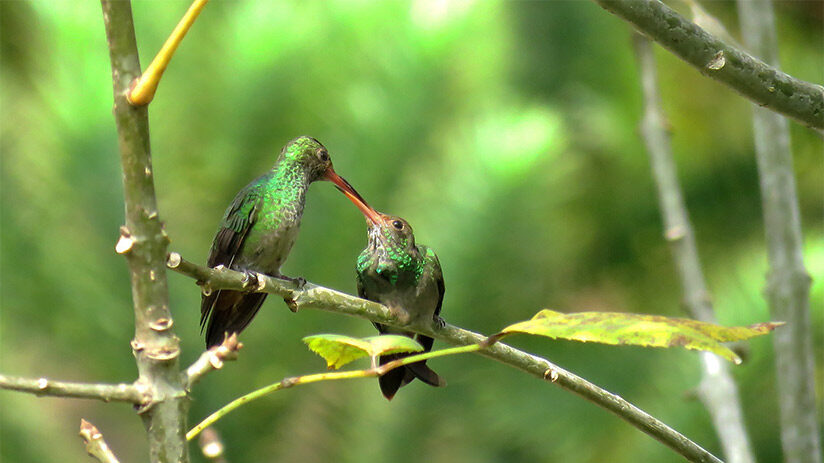
Usually, the bird watching in Peru period in the north are in June to July and from September to October. The middle of December can be a good time, too. But why? Because the peak of the dry season means many birds flying and searching for food, just in front of your view.
Featured zone: Pacaya Samiria national reserve
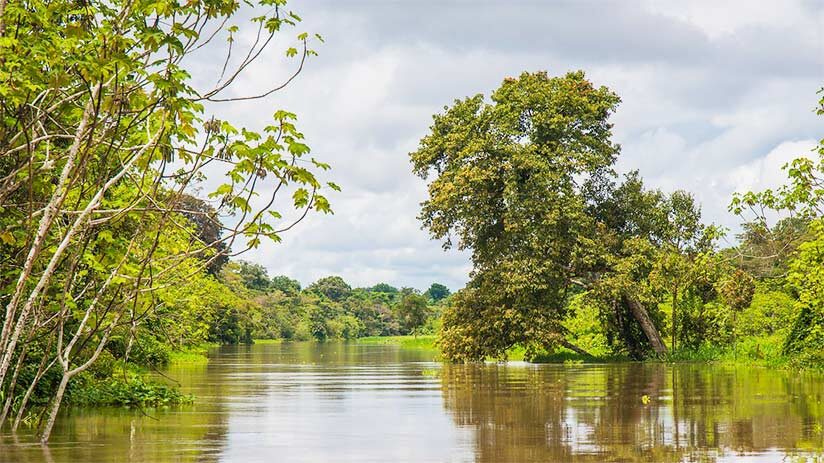
After enjoying Machu Picchu and the jungle, you can choose to tour the Pacaya Samiria National Reserve. This reserve claims to be one of the most virgin places in the Amazon and an excellent destination for bird watching in Peru. This is located within the department of Loreto, deep in the Amazon Rainforest north. Inside you can see numerous varieties of parrots, the Wattled Curassow, the Amazonian Umbrellabird, and the Great Potoo among others.
Featured bird: The mythical Wattled curassow
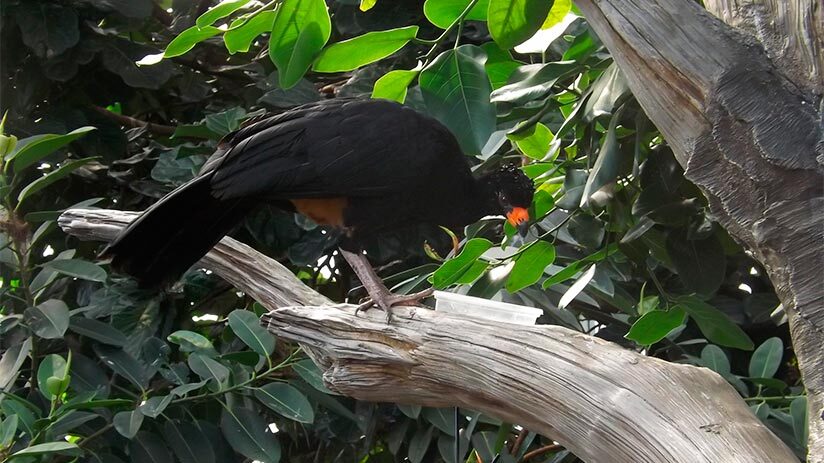
The Wattled Curassow is a large game bird, it has black plumage and a red beak. Males have white underparts, while females are chestnuts. It is strongly associated with riparian environments, especially seasonally flooded forests. Also, river islands or any fairly arboreal region is a good place. Currently, it is quite rare to see it due to its distribution and the effects of discriminated hunting.
Therefore, despite its great variety, its existence is often considered a myth. They are quite shy about human contact. It is one of the birds considered in danger of extinction, it is estimated that only about 300 birds remain in Peru. One of the best places to spot the bird is the Pacaya-Samiria National Reserve, right on the shore of the main river of the Amazon in Peru.
Center of Peru
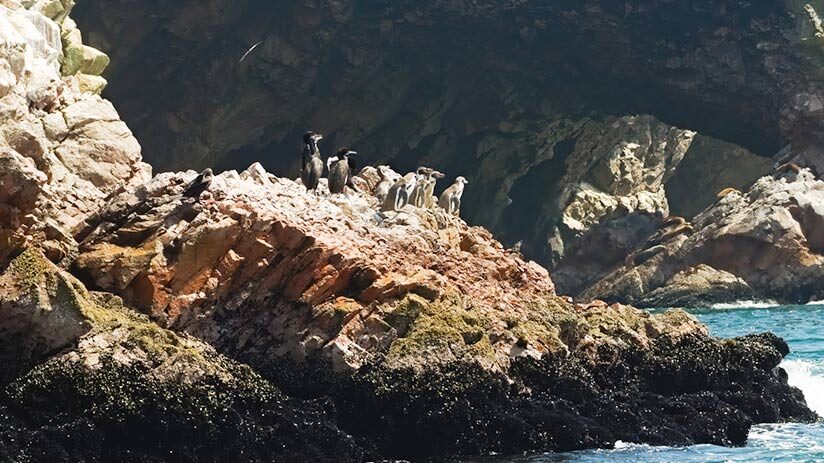
The center of Peru hosts around 50 endemic birds, even many others. If you are in Lima, the Peruvian capital, you can take a break and go east and south of it, to do bird watching in Peru, especially in its center. The western slope of the Andes is home to many of these birds, in addition to the grasslands and swamps of Punta Alta, Junin lake, tunnel and Carpish range, cloud and tree forests, Huascaran National Park, and Llanganuco lakes.
Throughout all zones mentioned before you will see representative birds of the zone like the mighty woodpecker, the Tapaculo haze, Bay-vented Cotinga, Golden-backed Mountain-Tanager, Pardusco, and the White-Cheeked Cotinga. Beside El chorlito diademado, el chorlitejo blanco, el Puna Tinamou y el minero de alas oscuras.
The most representative endemic birds are the Great Inca Finch, Rufous Warbler Finch, Flat-Tailed Warbler Finch, and Black-breasted Hillstar. On lakes, you will see Ground tyrants, saw finches, and the sickle-winged guan.
Best zones to find them

The best zone to see them are the Paracas National Reserve, Huascaran National Park, Huanaco Trail, Santa Eulalia Valley, Andamarca Valley via Santa Eulalia Valley, Guácharos Caves, Carpish Tunnel and mountains, Marcapomacocha Lagoon, Ticlio Pass (4,818 m.a.s.l), Unchog Forest and Lake Junín.
Best time to visit the center
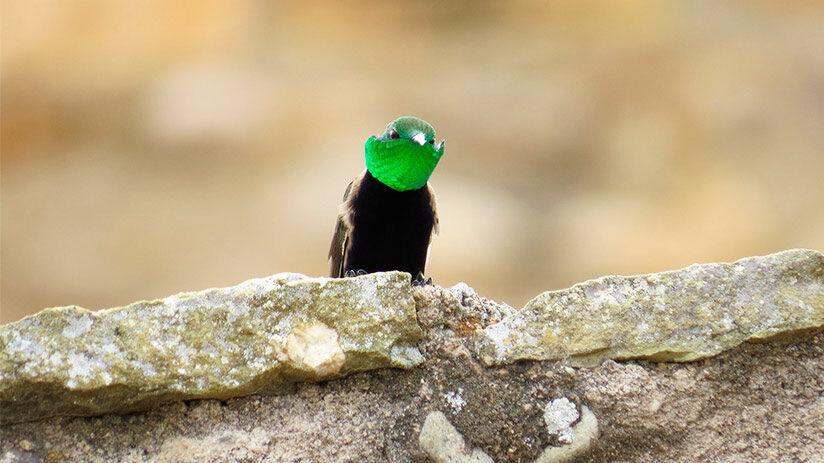
Between June and July is the best time to go to the center to do bird watching in Peru. This is the dry season in the Andean Mountains. The zone where the majority of Peruvian birds live.
Featured zone: Paracas National Reserve
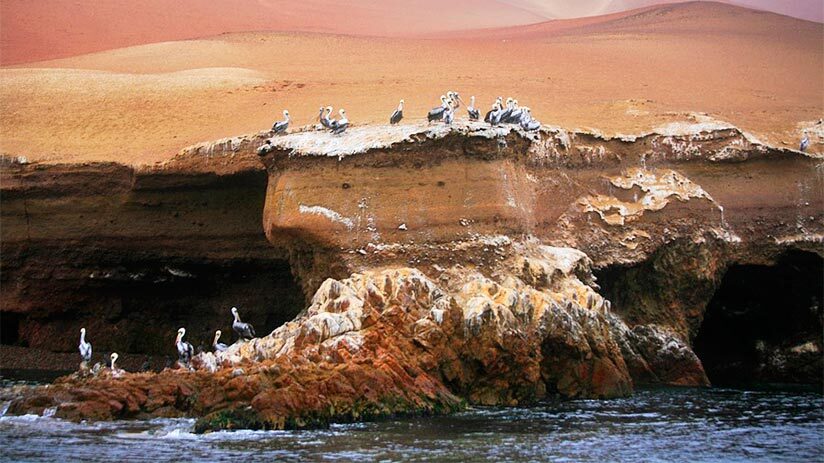
Following the list is the Paracas National Reserve, an incredible Peruvian destination where birds are not the only attraction. This incredible reserve is located about four hours south of Lima, very close to the city of Ica. In general, those who choose to vacation in the surroundings of the Reserve do so with plans to visit the Ballestas Islands. These rock formations are one of the most important marine sanctuaries in Peru. In them, you can see seals, dolphins, and a great variety of birds. To reach them, it is necessary to undertake a boat excursion. But the payoff this tour brings is unparalleled. You will be able to observe the Humboldt penguin, the Guano Guanay bird, and pelicans among other species. The tour to the Islands is one of the best introductions to bird watching in Peru and one of the best things to do in Paracas.
Featured Bird: The Guanay Guano Bird
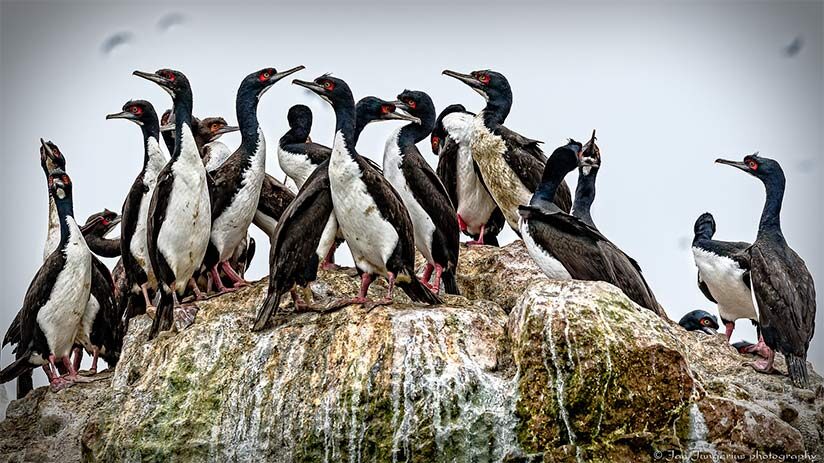
While the Guanay Guano may not be the prettiest bird of the bunch, it certainly has unique qualities. This bird is one which you have to make sure to spot, especially if you are looking to travel to Paracas. This bird usually lives mainly on the Peruvian coast and northern Chile. But its preferred habitat is sea waters and rocky shores. Its physical appearance is characterized by a grayish beak, with a red tint at the base of it.
The Guanay Guano bird is one of the main guano producers. Guano is a fairly effective fertilizer for plants. This is due to its high concentration of potassium, phosphate, and nitrogen. Three essential nutrients for a soil suitable for plants. Unfortunately, today these birds are at the center of different conservation programs.
South of Peru
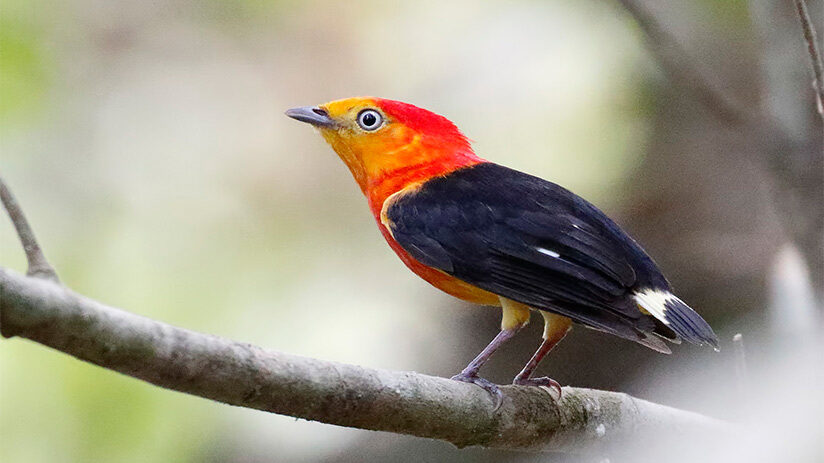
More than 1000 bird species live in the south of Peru, one-tenth of the world’s total! This can be possible by a combination of different geographic lands like temperate, subtropical, piedmont, and especially lowland Amazonian forests. There, some places of little more than 10 square kilometers can host more than 540 bird species among other amazing Peruvian animals, unbelievable!
Here are present multicolored tanagers, manakins, cotingas, the pale-winged trumpeter, a wide variety of hummingbirds such as quetzals, the bearded mountaineer, toucans, jacamars, and the famous Cock of the Rock.
Best zones to find them
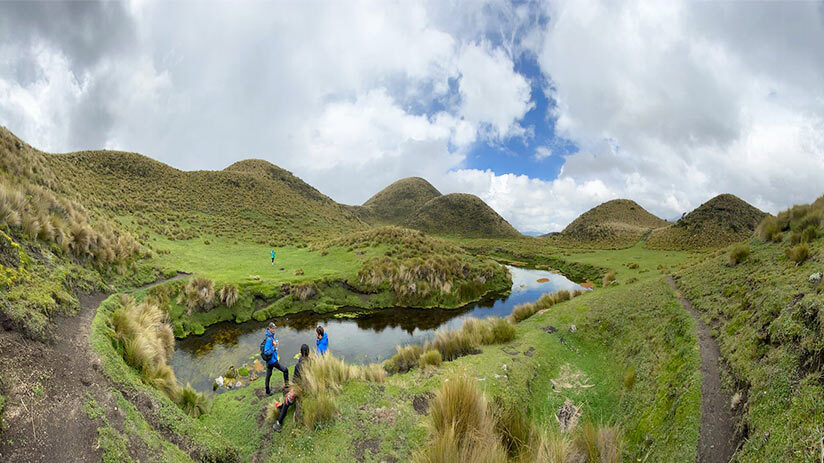
Happily, the south zone of Peru has national parks and national reserves, where the variety of birds can live and develop without any threat, making possible the activity of bird watching in Peru. Some of the best place to do bird watching are Manu National Park, Tambopata National Reserve, Colca Canyon, Aguas Calientes-Valle de Mandor-Machu Picchu, Cuzco through Manu way, Iberia and Tipishca around Puerto Maldonado, Saona Lodge near Puerto Maldonado along the Tambopata River, Wayqecha Biological Station/Zona del Camino Alto del Manu (3,000 m.a.s.l), Huacarpay Lake, Pantiacolla Lodge area, Pakaritampu Hotel, Abra Málaga (up to 4,300 m.a.s.l.) and travel by train between Ollantaytambo and Aguas Calientes.
The best time to visit the south
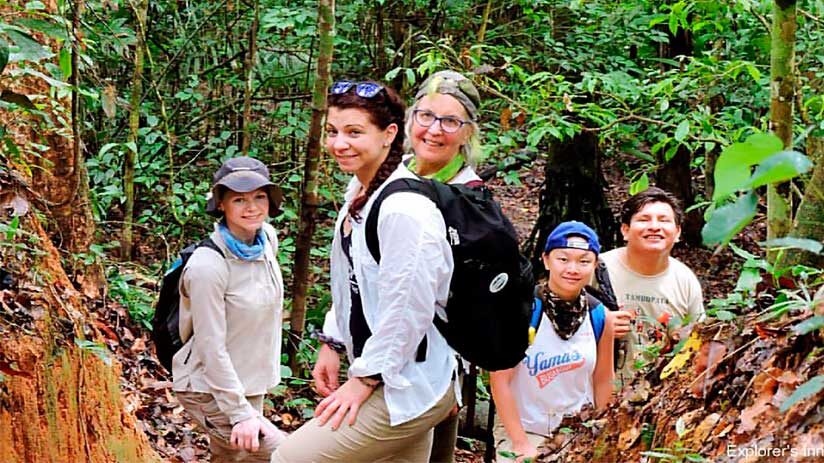
Between April to November is the dry season in the Peruvian Andean mountains, and it is the best time to do bird watching in Peru south. Especially, from August to September when the clay licks are covered by Guacamayos and the Cocks of the Rocks are frequent visitors to rock pools inside the Amazon.
Featured zone: Manu National Park
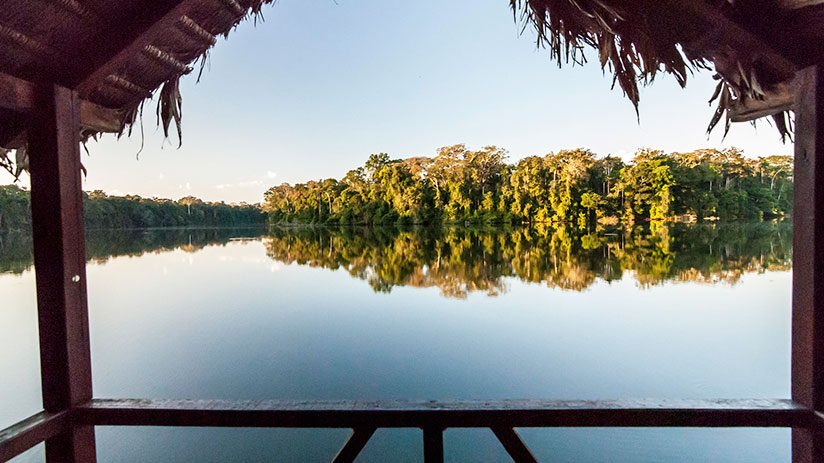
Manu National Park is known for having the greatest biodiversity of any protected site in the world. Located between Paucartambo, Cusco, and Madre de Dios, this national park is a key conservation unit for birds in Peru and has been voted one of the top ten places for bird watching in the world. In total, more than 1000 species of birds have been recorded in the area.
Before being labeled as a protected area by the Peruvian government in 1973, the Manu National Park remained conserved as a result of its inaccessibility. Therefore, when you visit Manu, you can explore a variety of habitats, from orchid-laden cloud forests to the rich Amazon rainforest.
The birds you will see here include various species of hummingbirds, herons, parrots, and the most striking of all: The Cock of the Rocks, the national bird of Peru. Inside Manu, you will have the opportunity to appreciate this as well as other incredible species of birds. If you plan to visit this wonderful park, it would be a good idea to include it in the different Amazon tours from Cusco.
Featured Bird: Cock of the Rocks
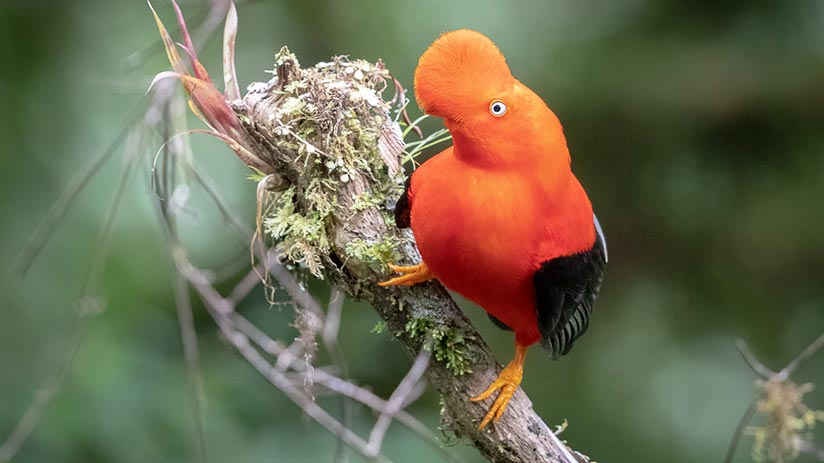
The cock-of-the-rock is a medium-sized bird that is native to the Andean cloud forests of South America. As is often the case with other species of birds, the male has stronger color hues. While the female boasts dark and earthy colors. The male is characterized by having a large, disc-shaped crest on his head that differentiates him from all other species.
And in Manu, you will have great opportunities to see these splendid birds in their natural habitat. The cock-of-the-rock is known to have a fairly varied diet. These birds eat fruits, insects, reptiles, small mice, and amphibians. Males are often recognized for the series of mating songs and dances that they use to attract females. Those who after mating will responsible for making the nest and incubating the eggs.
Happily, Manu’s cloud forests allow the cock-of-the-rocks to live undisturbed.
Featured zone: Tambopata National Reserve
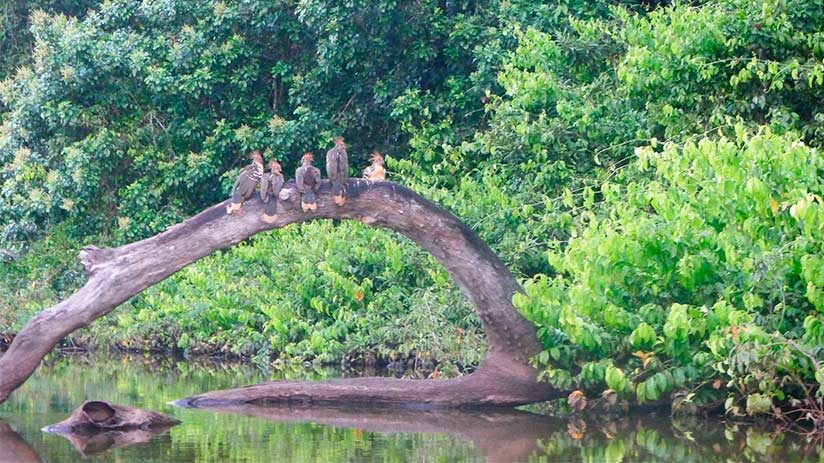
Another important destination where you can enjoy bird watching is the Tambopata National Reserve. This extensive and diversified reserve is located within the Peruvian Amazon basin, just south of the Madre de Dios River. If you plan to travel to Tambopata, you can get to the reserve by boat from the city of Puerto Maldonado. The reserve is home to some of the wildest and most pristine environments on planet earth, allowing numerous species of birds to flourish.
Visitors looking to explore the reserve are granted minimal access to ensure the protection of the reserve. Its great purity and natural preservation is the reason for its popularity and attractiveness. Not in vain, Tambopata is considered one of the best destinations for bird watching in Peru. To have a dimension of the biodiversity that the reserve boasts, you can find approximately 670 different species of birds. Some of the most popular species in the area are the harpy eagle, the hoatzin, thirteen different species of tinamú, and the popular macaw. There are many reasons to see birds in Tambopata, and the known macaw is one of the best.
Featured bird: the Guacamayo
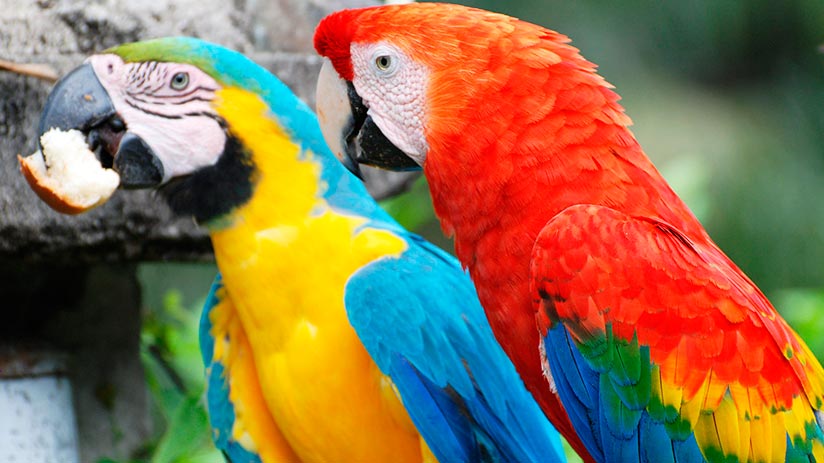
About four species of large and four small macaws have been recorded within the Tambopata National Reserve. Along with 17 other species of parrots and parakeets of different sizes. The macaw’s large size, strong voice, social nature, and vivid colors make these tropical birds of the Parrot family a favorite of many. The largest of these birds is known as the hyacinth macaw. This one has a wingspan of up to 4 feet or 1.2 meters.
The main diet of these birds consists of different foods such as fruits, nuts, seeds, flowers, and leaves. However, some research suggests that macaws in the Amazon basin also eat clay. This serves to neutralize the different toxins in their bodies. This consumption is exclusive to macaws found in the western Amazon region. And its ritual of clay consumption is usually quite a spectacle to behold. Inside Tambopata, you will be able to appreciate the macaws eating from the different clay licks.
Featured zone: Colca Canyon
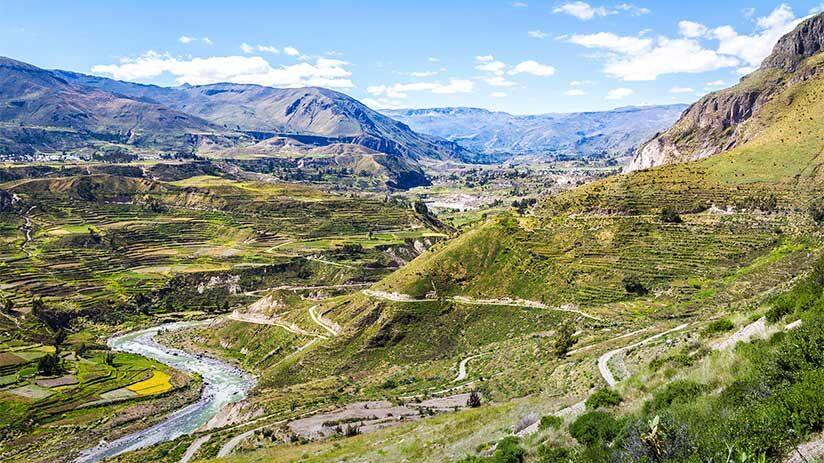
After immersing yourself in an Amazon tour in Peru, it may be time to get to know Arequipa and its great attractions. Another of the best destinations to experience bird watching in Peru is the Colca Canyon. This is located in southern Peru, about 160 kilometers northwest of Arequipa. The Colca Canyon tour is a great point spot, since it has an approximate depth of 4,160 meters, doubling the depth of the well-known Grand Canyon. And right next to the Canyon is the Colca Valley, another natural paradise full of wonderful scenarios.
These environments are home to numerous species of birds, of which you can find the giant hummingbird, the Chilean flamingo, the Andean goose, and the popular Andean condor. However, usually, bird enthusiasts come to the Canyon to appreciate the majestic Condor. Condors are a sight to behold and can be admired up close as they fly. The condor is one of the longest-lived bird species, having a useful life of more than one hundred years!
Featured bird: The Andean Condor
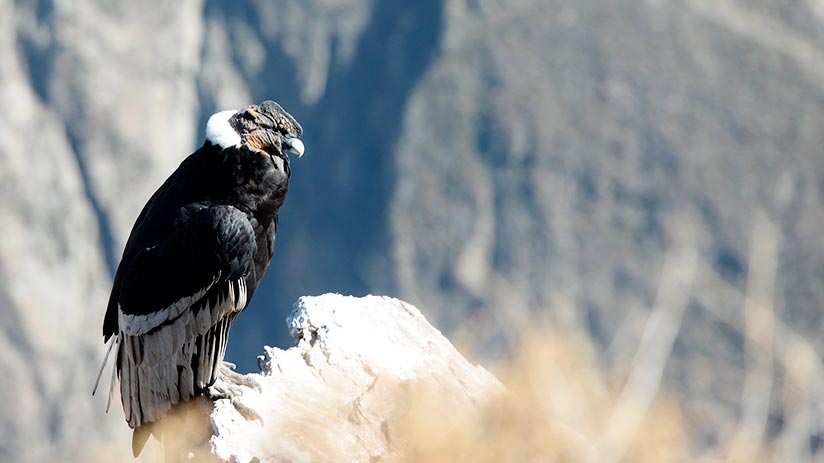
The majestic Andean condors of the Colca are one of the best spectacles to behold in the region. These can be admired up close as they fly down the canyon walls. The different viewpoints available will give you this incredible possibility. One of these popular viewpoints is the Cruz del Cóndor, where the canyon floor is about 1,200 meters.
This wonderful South American bird is one of the few species of condors of the vulture family on the American continent. They are primarily scavengers and feed on dead or decomposing Peruvian animals. The condor has a quite distinctive appearance. It has a neck practically without feathers and is reddish in color. Even her neck changes color depending on her emotional state.
New species in Peru
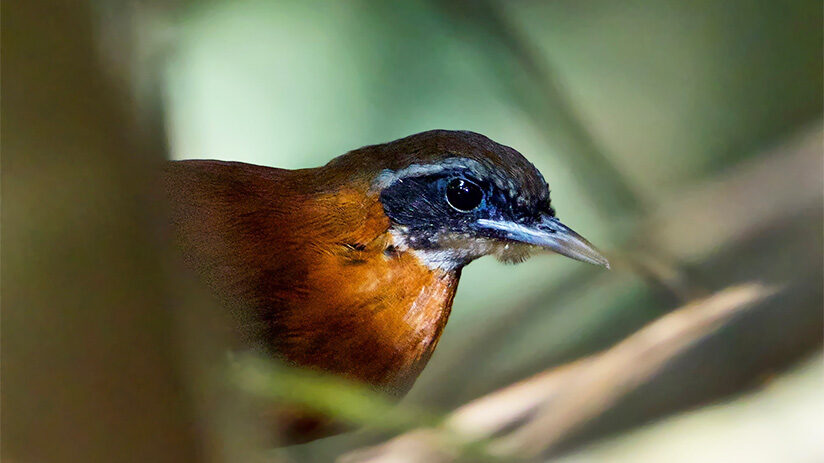
Many of the new species being discovered in Peru are monotonous colored birds. Such as the Tyrant Flycatchers and Tapaculos. Its drab colors are quite difficult to distinguish, making new identifications a challenge. The discovery of striking or distinctive species suggests that there are still a few discoveries to be made. And it is not surprising, since with the great biodiversity in Peru it is very possible to find new species far from human contact. Some species found are the Orange-throated Tanager (described in 1964), the Long-whiskered Owlet (1977), the Scarlet-banded Barbet (2000), and the Cordillera Azul Antbird (2017)
There may be still between 30 and 50 new species to be discovered in Peru. Perhaps the majority are in regions of not very easy access. So visiting Peru is ideal if you feel like a fan of the wonderful birds. And getting off the beaten track is not so necessary to spot many of the described species.
“IN ORDER TO SEE BIRDS IT IS NECESSARY TO BECOME A PART OF THE SILENCE”
Wonderful destinations for bird watching abound in Peru. In some of these places, you can see some of the most impressive and interesting birds. And with great biodiversity, the Andean country is one of the best destinations to enjoy bird watching. We hope together with our colleagues from Machu Travel Peru to have been helpful. If you want to know more about our sighting tours, you can consult with our advisors. Our qualified team will be happy to help you a little to fulfill the trip of your dreams. With our years of experience, we know very well how to make your time magica.
